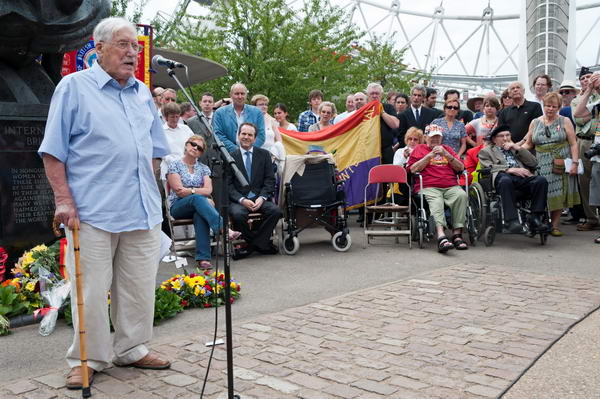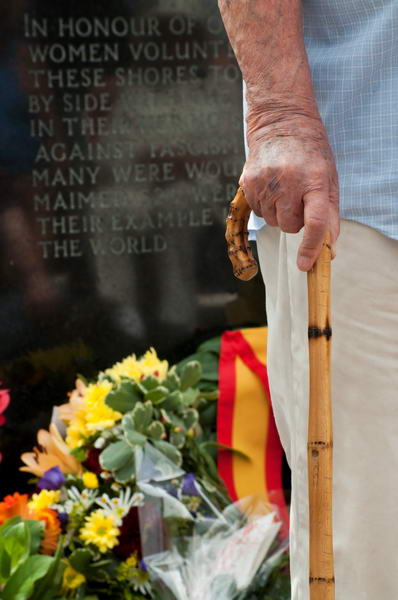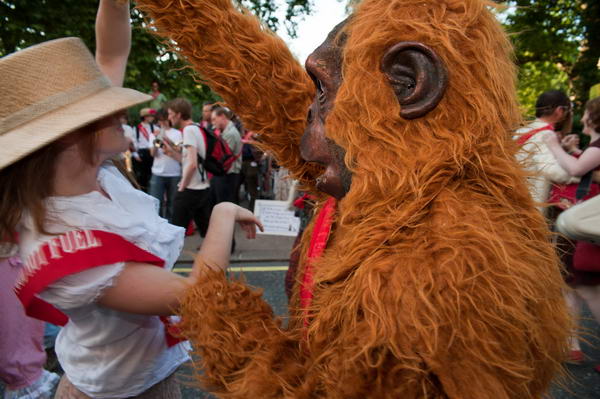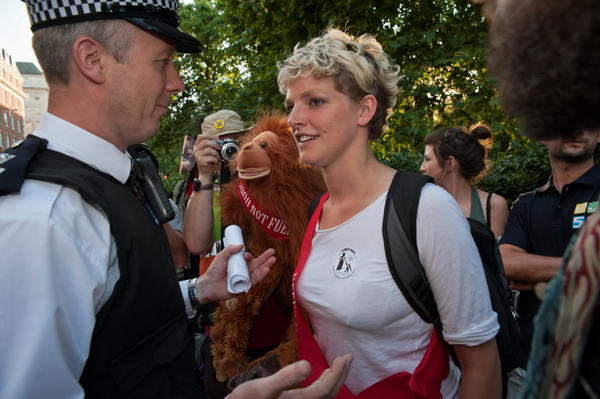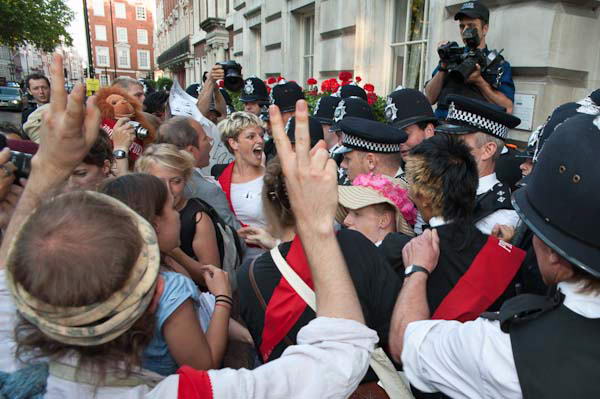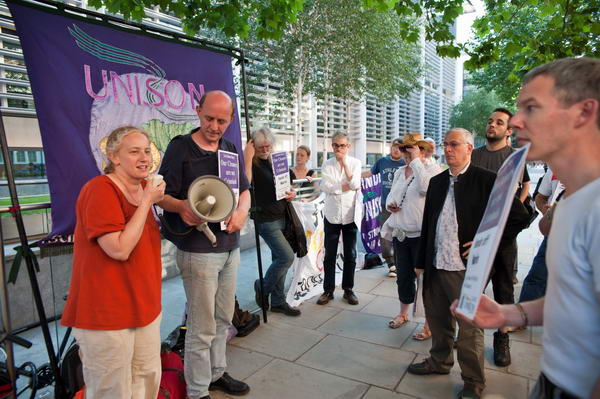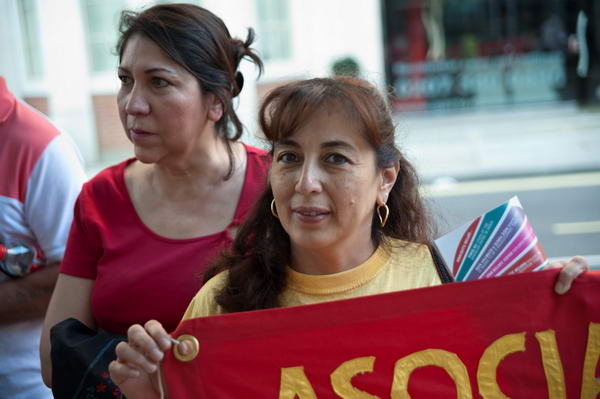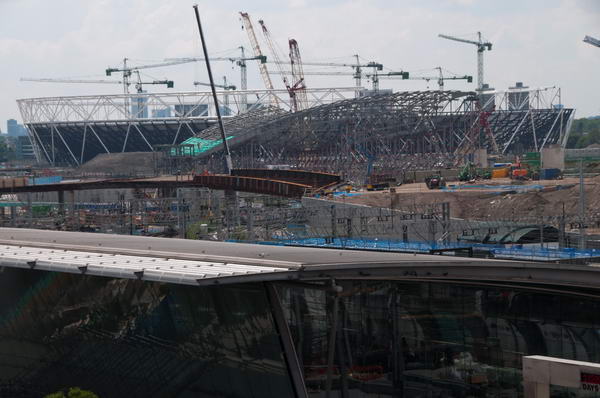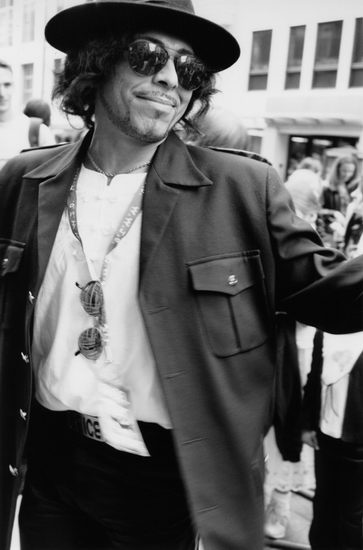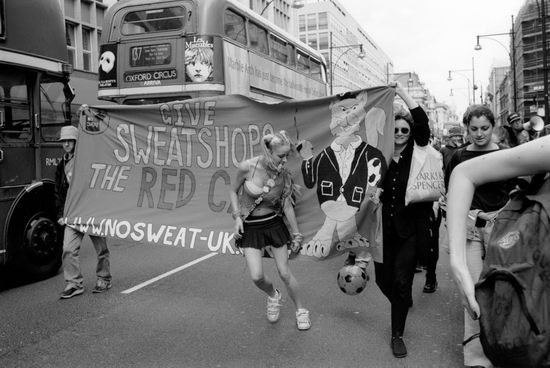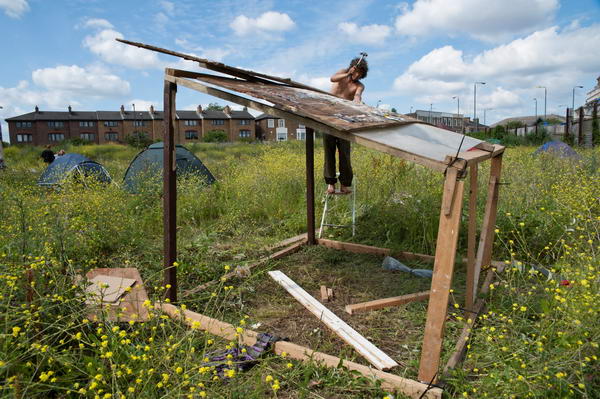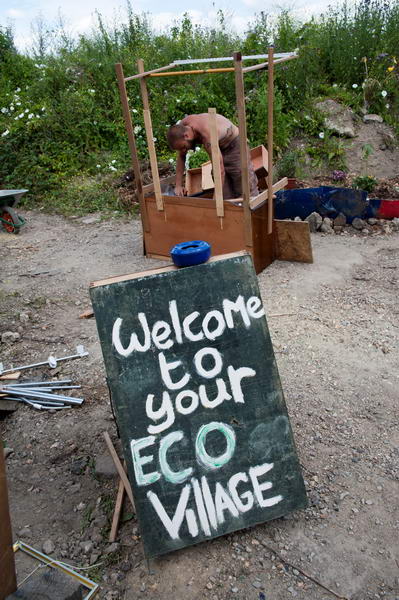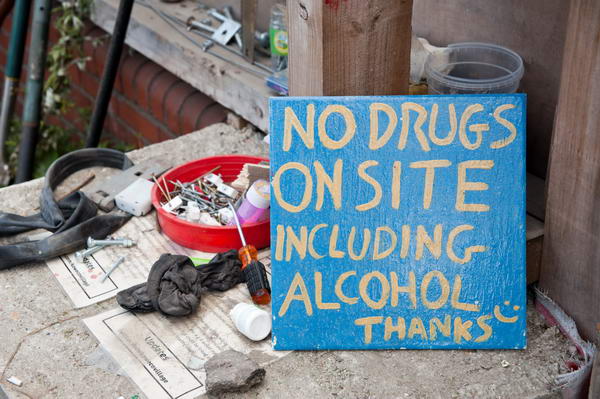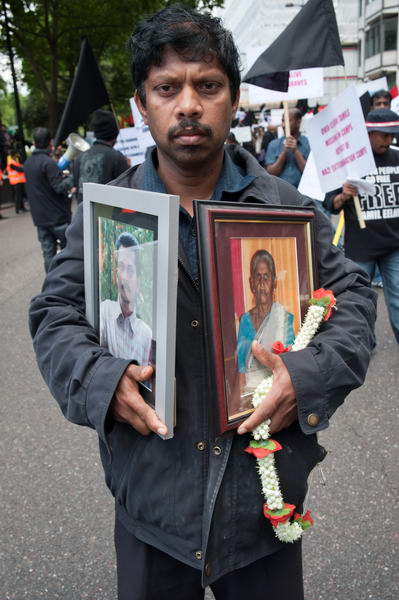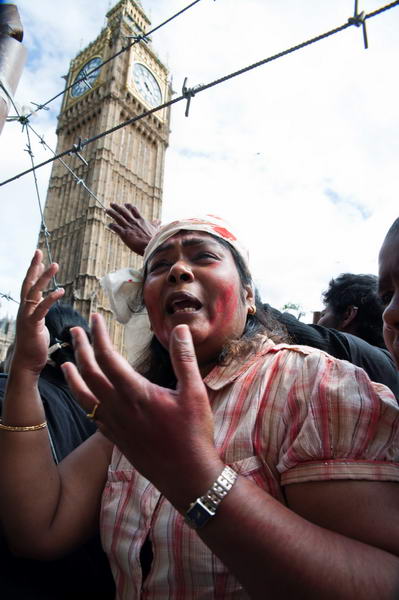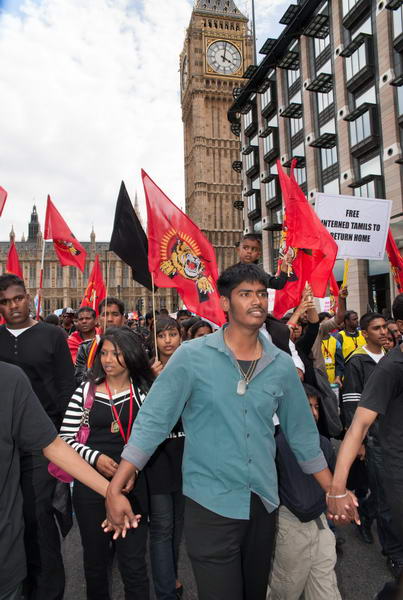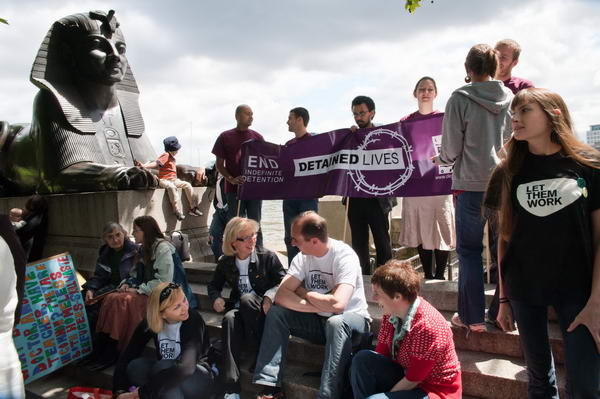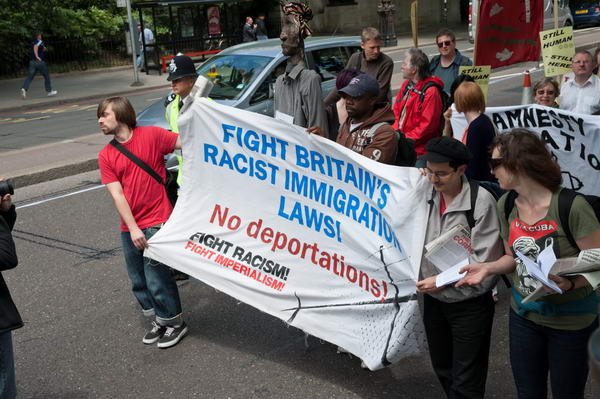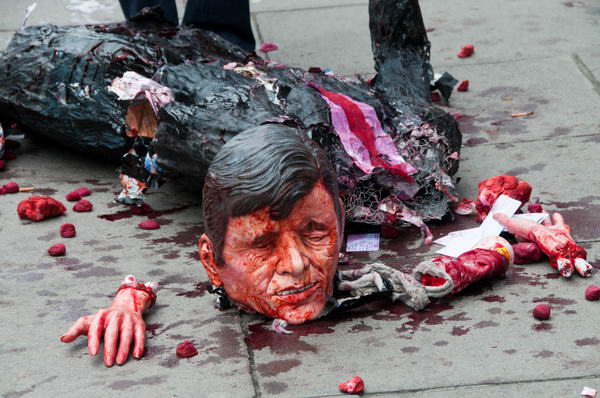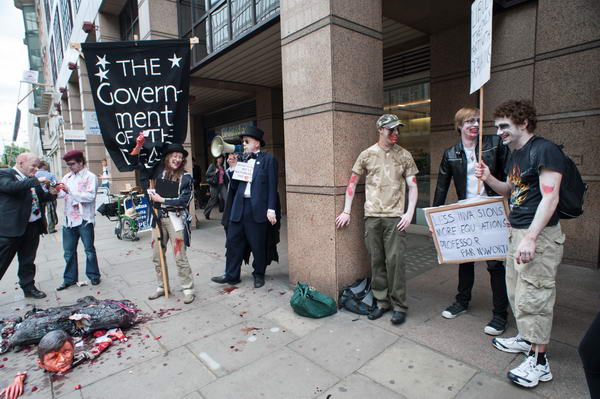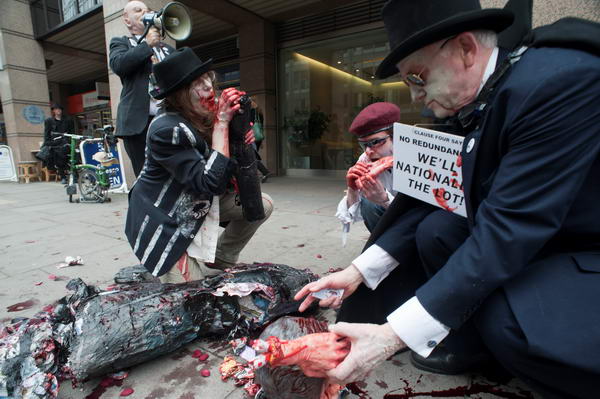One of my colleagues, Marc Vallée, has a piece in the Guardian today, The Met’s attack on photographers which examines the advice issued today by the Metropolitan police service (MPS) to the public and the media on photography in public places.
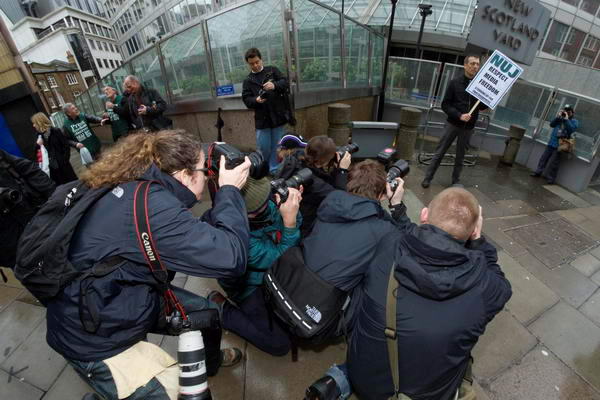
Protest by NUJ General Secretary Jeremy Dear and photographers at New Scotland Yard, March 2008
It raises a number of important questions about such advice, and in particular of how sections 44 and 43 of the Terrorism Act 2000 apply to “protected journalistic material” where it is not at all clear that the police have the legal power to “view digital images contained in mobile telephones or cameras” that the advice claims.
The advice given by the MPS is that section 76 of the Counter Terrorism Act 2008 (referrred to by the MPS as 58a of the 2000 Act) which makes it an offence to photograph police where a reasonable suspicion can be demonstrated that the information was of a kind likely to be useful to a person committing or preparing an act of terrorism should not be used to “arrest people photographing police officers in the course of normal policing activities, including protest.”
Which would be good news, except that there are, as Marc mentions, at least two well-authenticated cases where it has been so used, including one by a photographer I know who was covering the attempted eviction of a London squat – with absolutely no terrorist connections.
As Marc says “Professional photographers such as myself view it as part of an ongoing campaign to create a hostile environment for photography in the public sphere.” It’s something I first wrote about on ‘My London Diary’ almost five years ago – here is my exact text from October 2004 – all then in lower case. I’ve picked out the key parts in bold:
on the friday, critical mass were out on their bikes, together with rising tide and other environmental protestors. on a ‘london underwater 2050 tour of the g8 climate criminals‘. starting under waterloo bridge, they went on tour, visiting the london offices of several climate change villains, including petrol giants exxon mobil and bp and the canadian government, ending up outside the national portrait gallery, site of the annual bp-sponsored portrait award.
more pictures
it was a generally good-natured event, with an international samba band. from the top of a tourist bus an american voice asked the bill what was on. as he floundered to reply, the woman i was talking to suggested “hey it’s a fluffy takeover!”
most of the police were good-natured and cooperative throughout, but there were some ineffectual attempts to block the path of the demonstrators. by standing in the road the police blocked traffic, while the demonstrators simply walked around them.
worrying was the deliberate police use of photography as intimidation, with the police photographer going out of his way to confront demonstrators, aided by two other officers.
i worry because i think it is an attempt to attack civil liberties, but also because such behaviour makes all photographers suspect. i can only work effectively if i gain the trust and cooperation of those whose pictures i take. perhaps it helps that photography is one of the activities that also arouses suspicion and intimidation by the police.
as i walked away at the end of the demonstration, this team ran 50 yards down the road and caught up with me, one calling”excuse me, sir” and tapping on my shoulder. i turned to face him, and found myself looking into the lens of the police photographer, who took my picture as his colleague started to question me about who i was taking pictures for. it seemed clear and deliberate harassment, intended to intimidate a photographer acting entirely lawfully, photographing on the public highway.
This was the first time I was aware of being deliberately targeted by the police because I was a photographer, but it was the first of many times – and if we seriously believe that the police are now destroying all those images that they have collected over the years, there will be several thousands of pictures of me being deleted from hard disks and databases.
Another key moment for me came in April 2006, outside Harmondsworth Immigration Detention Centre, where I watched from a raised bank as a group of demonstrators were kettled by the police and a colleague showed his Press card. Officers told him that they didn’t believe it was a real press card, and he called to the 3 photographers watching from the bank to show ours to confirm.
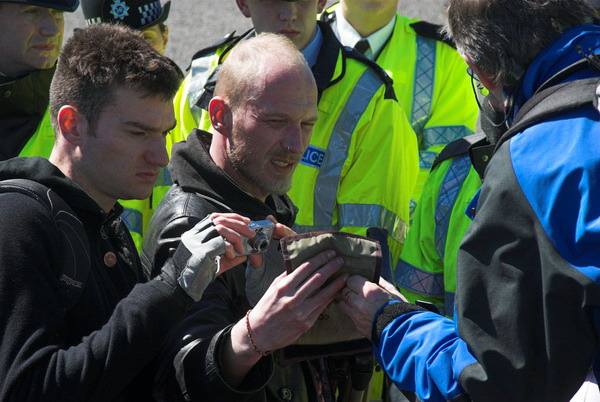
Fortunately one of the other photographers rushed to do so, as I’d noticed as I came out that day that mine had expired at the end of the previous month!
Since then I’ve also been told by officers that my now current press card isn’t a real press card, though more often they tell me they just don’t care if I’m press.
What is particularly regrettable about the MPS statement is that it fails to refer to the published guidelines for MPS staff and photographers that were agreed between the Met and the BPPA, CIoJ and the NUJ and later approved by ACPO, although some aspects of this are summarised.
One key paragraph is missing:
“Members of the media have a duty to report from the scene of many of the incidents we have to deal with. We should actively help them carry out their responsibilities provided they do no interfere with ours.“
